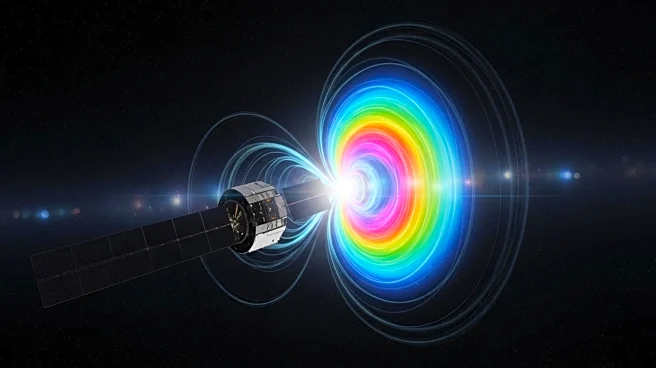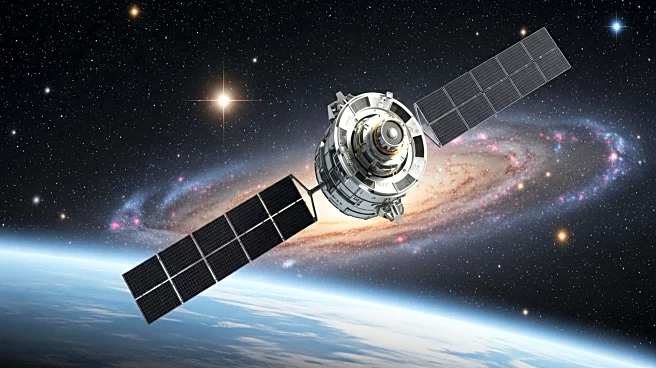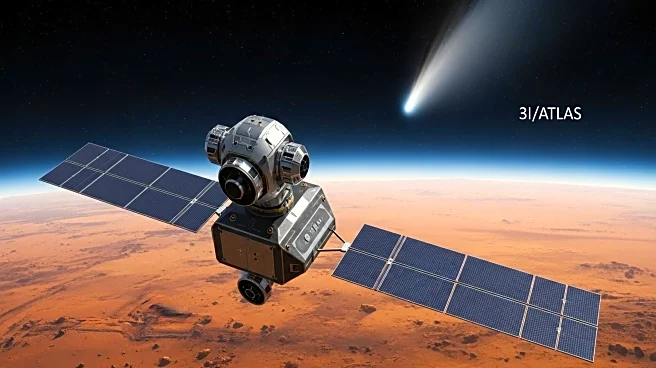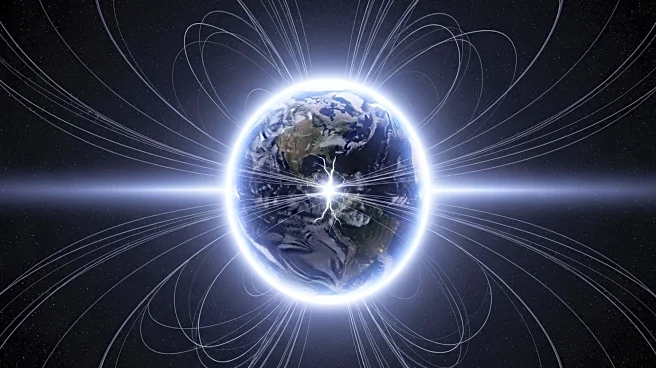What's Happening?
Satellite data has revealed that a weak spot in Earth's magnetic field, known as the South Atlantic Anomaly, is expanding. This anomaly, located southeast of South America and southwest of Africa, was first identified in the 19th century. It is characterized by a dip in the planet's magnetic field, exposing satellites to higher doses of radiation, which can cause technical issues. The European Space Agency (ESA) has studied this anomaly for 11 years, using three satellites known as Swarm to measure the planet's magnetic signals. The anomaly has expanded to an area nearly half the size of continental Europe, approximately two million square miles, with its weakening speed increasing since 2020.
Why It's Important?
The South Atlantic Anomaly's expansion poses potential risks to satellite operations and technological systems reliant on Earth's magnetic field. As the anomaly grows, satellites passing over the region may experience increased radiation exposure, leading to technical malfunctions or blackouts. Understanding the dynamics of Earth's magnetic field is crucial for predicting and mitigating these risks. The anomaly's growth also raises questions about the underlying processes affecting Earth's magnetic field, which is generated by the planet's outer core. Insights gained from studying this anomaly could inform broader research on geomagnetic phenomena and their implications for technology and communication systems.
What's Next?
The ESA plans to continue monitoring the South Atlantic Anomaly and other changes in Earth's magnetic field using the Swarm satellites. These satellites will provide extended data series, offering unprecedented insights into the planet's geomagnetic dynamics. The ongoing research aims to understand the anomaly's causes and its impact on satellite operations. As the solar minimum approaches, researchers anticipate gaining more detailed observations of Earth's magnetic field, potentially extending the study beyond 2030. This continued monitoring is essential for developing strategies to protect technological systems from the effects of geomagnetic anomalies.
Beyond the Headlines
The study of Earth's magnetic field anomalies highlights the complex interplay between planetary processes and technological systems. As researchers delve deeper into the causes of these anomalies, they may uncover broader implications for understanding Earth's geophysical behavior. The findings could also contribute to the development of more resilient satellite technologies, capable of withstanding increased radiation exposure. Additionally, the research underscores the importance of international collaboration in addressing global scientific challenges, as data from multiple satellites and research institutions contribute to a comprehensive understanding of Earth's magnetic field.











